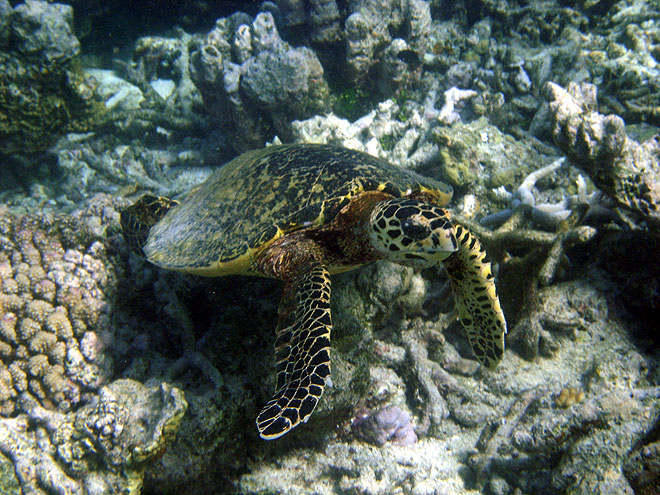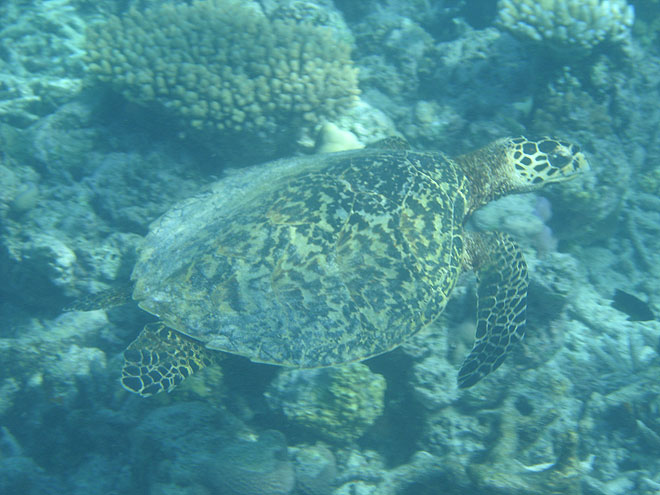For many, the most awe inspiring sight at the Great Barrier Reef is spotting a turtle. These gentle, graceful creatures are marvellous to see in their natural habitat, and are uncommon enough to be a wondrous novelty. One such species often found cruising these waters in Far North Queensland is the hawksbill turtle.

The hawksbill, which owes its name to its tapered head ending in a pointed bird-like mouth, can be found throughout various parts of the Atlantic and Pacific Ocean. However, it’s mostly in tropical shallow lagoons and coral reefs where they like to subsist. Here they can be found lazing under caves and ledges throughout the day.
Like the green and leatherback turtle, the hawksbill turtle has flipper-like arms well adapted to life in the open ocean. However, it differs in a number of respects to its counterparts, as it has two claws on each flipper, while it crawls on land with an alternating gait, leaving uneven tracks in the sand.
Hawksbills also have a heart shaped carapace when they’re young, which turns into a more elongated shape when they get older. Its carapace, unlike other turtles, is also serrated, having overlapping plates which give it a distinctly reptilian appearance when viewed from above.

In mating, the hawksbill turtle breeds biannually, with the females dragging themselves onto the beach at night before digging a nesting hole with their flippers. Baby hawksbills hatch after two months before making their dangerous swim to the shoreline, where they’re often lucky if they avoid the clutches of seagulls and crabs, who prey on their vulnerability.
In feeding, the hawksbill is omnivorous, although it mostly consumes sea sponges. Interestingly, they can also devour food poisonous to other creatures such as the Portuguese man o’ war and the jellyfish-like hydrozoan. And as far as predation is concerned, the hawksbill can be eaten by larger fish, sharks, crocodiles and humans.
Unfortunately for the hawksbill turtle, they are a critically endangered species, as their shells remain the primary source used for decorative purpose. Their eggs are also eaten around the world despite their protective status.
